#sandgame
Explore tagged Tumblr posts
Text
Faking a spherical Age for the sake of KI coordinates
Heyo Tumblr, been a while!
Although I haven't used this blog lately, I have still been screwing around with this thing in the background of my life, because at this point I've basically accepted that semi-theorizing about how to make Better Uru is just my pastime.
Anyway. As a result of something else I was contemplating for this bizarre project of mine, I realized that because of how KI coordinates work, game worlds which allowed players to wander sufficiently far from the Age's Maintainer's Mark would need to implement some form of fakery in order to properly simulate the effect of walking around on a sphere while using a cylindrical coordinate system.
The "obvious" solution of just making the game world a sphere is… not really smart, though, so what's a game dev who is overcommitted to the concept of realism in this game to do?
Well, first let's finish defining the problem.
As you walk away from the Zero point of an Age, your elevation coordinate will decrease (generally; local surface geometry like mountains notwithstanding) until you reach the Zero’s exact antipode, because walking across the surface of the sphere will always send you "down" relative to the placement of the Maintainer's Mark. It should then increase back to 0 as you proceed back toward the Zero point across the other half of the planet.
But because game worlds are flat, this effect would have to be simulated for sufficiently large maps.
To do this, we have to know the following values:
The average radius of the planet
The distance traveled from the Zero point
The Zero point’s elevation relative to the planet’s average radius
The player’s local elevation relative to the planet’s radius
Using the equation for the length of a circular arc, we can reverse engineer the angular distance traveled:
L = θ * r
Or
θ = L / r
Where L is the length of the arc travelled (how far from the zero point the player is in a straight line), and r is the planet’s radius.
NOTE: The math in the next part assumes you never travel more than 90 degrees around the planet, which I think is generally acceptable for the purposes of this hypothetical, but just be aware that what's presented here is not a completely comprehensive solution.
Solving for θ lets us construct a right triangle whose hypotenuse is the planet’s radius plus the player’s current elevation above that radius, and whose long leg is the planet’s radius minus the vertical distance the player has travelled away from the Zero point. We find the length of the leg with this function:
a = c × sin(θ)
Once we have a, we subtract it from the planet’s radius to get the elevation KI coordinate.
It may be necessary to make adjustments to certain values going into the equation solving for a in cases where the player has moved more than 90 degrees around the planet from the Zero point.
The distance coordinate is calculated using the following formula to get the horizontal “opposite” leg of the right triangle formed by the radius of the planet and the angle the player is away from the Zero axis—which extends straight through the center of the planet, or:
b = c × cos(θ)
The value of b is our horizontal distance from the axis of the Zero point. (I should point out that we can't just use the XZ vector distance between the player and the Zero point for this measurement, as the player's travel is being treated as an arc for the purposes of simulating a sphere, and the arc's length would be greater than the actual absolute linear distance traveled if the map were actually spherical.)
The angle coordinate is the simplest to calculate, as it’s simply the player position’s angle from the vector of the Zero point (the “line” of the Zero), converted to torantee.
In addition to faking the KI coordinates, a shader may also be used to post-process the geometry of the scene such that it falls over a false “horizon”, much like Animal Crossing New Horizons’ island terrain does (though the effect would be far less dramatic in this case).
3 notes
·
View notes
Text
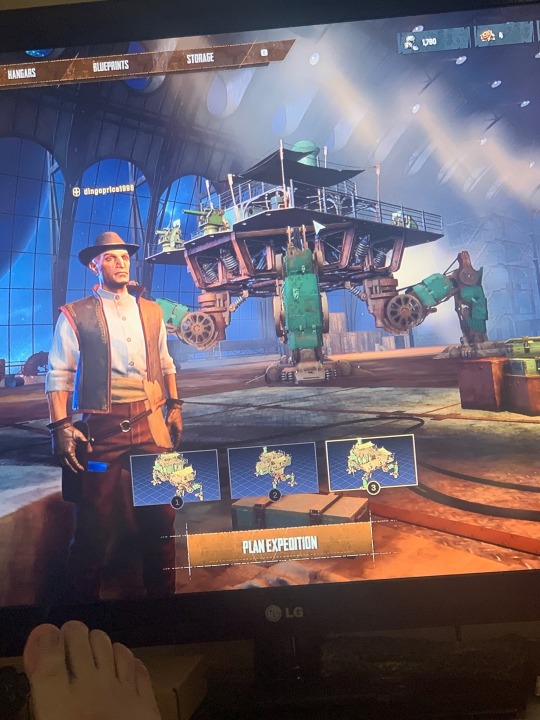
Imma need all the gamers to check out SAND on steam
1 note
·
View note
Photo
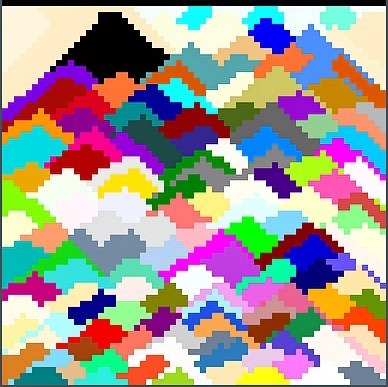
Our “Sand Painting Art Maker” game has 140 colors to choose from, and we just received this digital art work from a student in Texas who had the patience to go through and use all 140 colors! Love it! Go to our site and give it a try (see Art Games, page 1). #sandart #interactive #sandgame #artsed #artteacher #k12artchat #digitalart #artgames #freeonlinegames https://www.instagram.com/p/CbpzAgbLHwY/?utm_medium=tumblr
0 notes
Text
Kadish conspiracy theory time
Put on your tinfoil hats, folks. I concocted this bit of WMG while trying to come up with non-bahro things to do with the story in SAND, and I like it enough that I don’t want to keep it to myself anymore. Here goes:
Kadish was installed as the Grower by the Relyimah who still secretly operated within the Guild of Illusionists as a propaganda move to counter the growing influence of Anna and her “outsider ways” within D’ni society.
To explain...
The Relyimah were basically a secret police force that answered directly to the king, and who operated behind a legitimate front organization: the Guild of Illusionists. Officially, they were disbanded by King Lanaren in 5701 DE. Unofficially, I think that went about as well as taking down any shadowy pseudo-governmental organization ever does in Hollywood movies - that is to say, it didn’t. By my thinking, they stuck around, keeping quiet during the reign of the kings, but able to exert more influence (though still covertly) once the Guilds were put in charge of D’ni. Without a king directing their activities, it’s not unreasonable to assume that they devolved into the same sort of isolationist xenophobia that gripped much of D’ni over the millennia.
Anna was the focal point of a lot of controversial events leading up to the Fall: an outsider using Linking Books, an outsider marrying a D’ni citizen, an outsider having a child with a D’ni citizen, and an outsider agitating for the advancement of several economic and social equity proposals that flew in the face of D’ni’s longstanding tradition of rigid class stratification.
Kadish was a wealthy man who had been dismissed from the Guild of Writers. As a bit of context, Cyan didn’t cast Kadish as the Grower until after they needed to cobble together the Path of the Shell expansion pack (which is why it’s never mentioned in any of the Ages Beyond Myst-era content, despite Yeesha incessantly harping on him for deception and greed). As such, his dismissal (at least originally) had nothing to do with his assertion that he was the Grower. In the postmortem-esque Making of Uru in the back of the Complete Chronicles hint guide, the concept artist for Kadish Tolesa suggests that Kadish was actually just kind of a crappy Writer, and that’s what eventually got him dismissed.
It’s always baffled me that Kadish was able to build something as absurdly huge as Ahnonay while keeping it quiet (and while keeping the Maintainers away). He might have had a lot of money, but that’s a major infrastructure project, with a lot of hush money and a lot of people to have in on such an enormous scam. As a con man, that’s a lot of risk to take on. I also never quite understood why he was involved in the construction of Er’cana’s pellet factory - he was in the Guild of Writers, and the D’ni had two whole Guilds dedicated specifically to these sorts of projects: the Engineers and the Architects. As a Writer (especially a former Writer), his involvement seems oddly superfluous.
I think that the Relyimah saw Anna’s influence on D’ni society as dangerous, and moved to counter it with an appeal to tradition. They propped up Kadish - who at this point had been relegated to running an art gallery on Ae’gura - as the Grower. Using him as a new prophet that they could control, the Relyimah hoped to draw the D’ni back to the “correct path” - and the Watcher’s predictions of destruction that the Grower would reverse could easily be framed in such a way as to cast Anna as the villain to be opposed (which, to be fair, she actually was, just... not how they probably thought). Through their front in the Guild of Illusionists, they had access to the funding, labor, and expertise needed to construct the massive illusion of Ahnonay, as well as the necessary influence to ensure that Er’cana could be used to manufacture the pellets that Kadish would need to claim that he was the “bringer of light”.
So there you go, that’s my crazy Kadish conspiracy theory. Unlike my Watcher’s Pub / Temple of the Tree theorizing last week, I have absolutely nothing to back this up canonically, I just really like the idea. Like I mentioned, I kind of want to use it as the basis for a non-bahro story arc in SAND, but I have no idea how to actually ride it to a satisfying conclusion. Hopefully in 20 years when I finally get SAND off the ground, you’ll all have forgotten about this and the reveal will still be a surprise ;).
#myst#uru#d'ni#wild mass guessing#kadish#relyimah#guild of illusionists#sandgame#we haven't been able to theorycraft about Rivenese water or Linking Theory for like a decade now#so this is me moving on to greener and crazier pastures ;)
16 notes
·
View notes
Photo
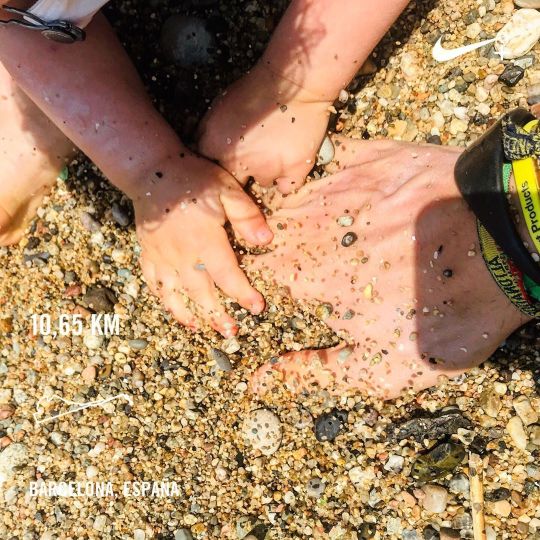
Sand games #wakeupnrun #run #running #nikeplus #nike #workout # #bcn #spain #JustDoIt #arewerunningtoday #spworlderunnersain #fitness #cardio #justdoit #shotoniphone #nikezoompegasusturbo #sandgames #sand #hand https://www.instagram.com/p/CBtZVMPB3fT/?igshid=bafhanazg8eq
#wakeupnrun#run#running#nikeplus#nike#workout#bcn#spain#justdoit#arewerunningtoday#spworlderunnersain#fitness#cardio#shotoniphone#nikezoompegasusturbo#sandgames#sand#hand
0 notes
Photo

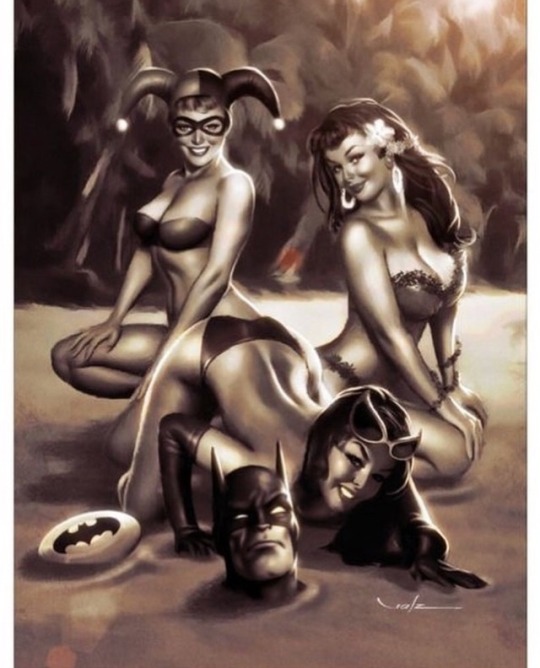
Let’s play a game
146 notes
·
View notes
Text
Cryptocurrency🔥You Can Buy Under ₹500💵In 2022 | Cryptocurrency | 5MBL |#cryptocurrency #5mbl #shorts
Cryptocurrency🔥You Can Buy Under ₹500💵In 2022 | Cryptocurrency | 5MBL |#cryptocurrency #5mbl #shorts
Cryptocurrency You Can Buy Under ₹500 In 2022 | Cryptocurrency | 5MBL | #galacoin #sandgame #maticpolygon … source
View On WordPress
0 notes
Photo
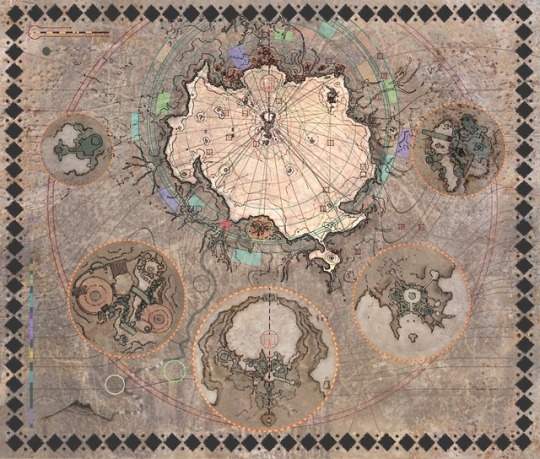
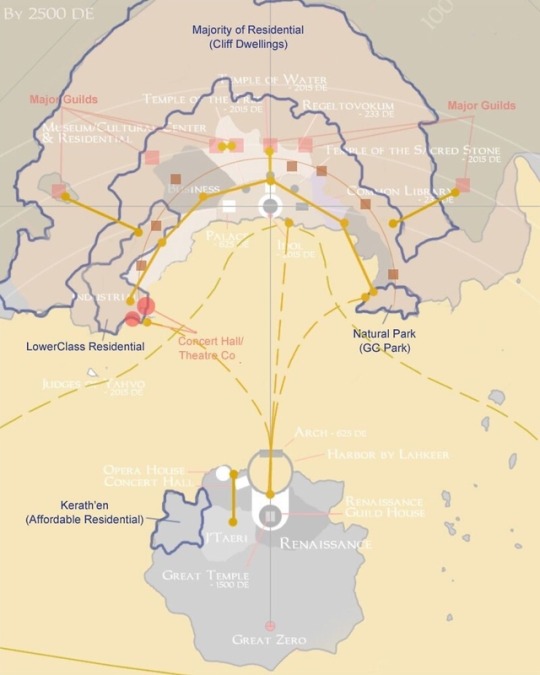
Amazing what you can find if you take the time to look! These are from the Art of Cyan downloadable book which came with Obduction, so if it’s not cool to post these I’ll take them down immediately. But they were too useful and remarkable to not share. The upper pic is the source of that curious cavern map that went around a while ago, and the second... well, I’ve never seen anything like it. @sandgame may be very interested! I sure am.
144 notes
·
View notes
Note
Hi I'm doing a project in creativity, architecture. I like the buildings and structures in myst games. Do you know any source of the concept art or architecture plans? Thanks.
I really think you should talk to @sandgame for that sort of information, that seems to be where the expertise lies!
2 notes
·
View notes
Text
Some NPC thoughts
Part of the magic of Uru was being able to actually talk to the characters in the game (if you were lucky enough to be around at the right time, of course). Unfortunately, using that as the primary mechanism of keeping players involved in the story just can’t scale to the size of a player base that would also make the game financially viable. That said, it’s a key component that made Uru very different and very special, and I want to find ways of keeping it around, while also recognizing its limitations.
Additionally, I want to give players more of a relationship with the various characters in the game, so that they have a better understanding of them and their roles in the cavern. Because the DRC and company were only ever “live” NPCs, the only way to get to know them at all was by being lucky enough to meet them in person. Otherwise, you were relying on word of mouth (or worse) to even know who they were. I know having deeply personal relationships with them is unrealistic and impractical, but there should at least be guaranteed opportunities for every player to meet them all and interact on some level.
To that end, the various main characters in the game (the DRC, Watson, etc.) should be able to exist as both traditional NPCs and Uru’s “live” NPCs – Actor-Controlled Characters, or ACCs, if you will. As ACCs, they would operate much the same way they did in Uru, occasionally wandering through various areas of the game, conversing with bystanders, and carrying out day-to-day business (the “palace intrigue”, if you will) with other ACCs to nudge along the finer points of the game’s current narrative. (As a side note, there will need to be some way to cover and report on this stuff in game for those who are interested but can’t be online 24/7.)
As ordinary NPCs, these characters would also exist to give and/or receive quests – for lack of a better word. Players may be tasked with bringing Kodama equipment to help shore up a chamber in the Aquarium, for instance, or be dispatched by Dr. Watson to talk with another NPC “explorer” who has information about the bahro. These tasks may be assigned directly by other NPCs, or come in the form of a KI message. Some quests may even only be possible if the player has a certain reputation with the character(s) in question. Anger Kodama, for instance, and you won’t get asked to help him anymore (or maybe you’ll get asked to help him by somebody who also dislikes Kodama and wants to annoy him). Or, if you blow off too many of Watson’s messages asking you to help vet information, he stops asking. Be diligent in completing marker mission tasks, however, and Laxman may take a shine to you and recruit you for more regular Lattice maintenance operations.
The challenge to this approach is marrying the ACC and the NPC so that they feel like a cohesive experience. First, ACCs should have access to the underlying metrics about their relationship with each person they interact with. This helps inform their tone and attitude. Players who have angered a character should expect to have their questions ignored at town halls, for instance. Similarly, ACCs should be able to feed the outcomes of live interactions back into the NPC’s metrics, so that if they substantially alter their standing as the result of an in-person interaction, the computer-driven NPC can take that into account going forward.
Second, characters should only ever exist in one location in the game at any given time. An ACC should never appear in Negilahn at the same time as their NPC counterpart is waiting patiently for you to arrive at a drop-off point in the City. When an actor logs on to control a character, the NPC counterparts should always link away (unless that would cause them to link out while actively speaking with a player, in which case we can let the mask slip a little, so to speak).
On a related note, as NPCs the main characters should generally not be visible in-game unless they are part of a player’s quest. In that case, they will be visible only to that player (and anyone else in their party currently engaged in the quest). Lesser characters that will not have an ACC counterpart can generally exist within the game 24/7, it will simply be the responsibility of the story department to know which characters are currently engaged in an activity so that they’re not used in another one somewhere else at the same time. Generally, NPCs that get used as elements in a personal quest shouldn’t also be used for ambient narrative to avoid conflicts. In the event that a special live event is in progress (like Wheely’s rescue), it should be possible to completely suspend the assignment of new quests relating to the NPCs involved, and active quests should also be suspended for the duration of the event, in order to prevent potentially incongruous interactions (we don’t want Laxman to be giddy with excitement over a new KI function while the cavern is in mourning, for instance).
To help keep players from getting frustrated or confused by receiving instructions to meet an NPC somewhere, only for them to be missing because their ACC is yucking it up in a pub downtown, players should be given temporary insight into a character’s location via the KI when they need to interact with them, along with receiving a ping when the ACC logs out (causing the NPC can return to their post) so that they know the character is available to speak with in the appropriate context. ACCs should stagger their availability so that players are not consistently locked out of progressing a quest because they can only play when the character is in ACC mode (having ACCs operate on 30-hour D’ni days would help with this). Additionally, players should only be able to receive a single assignment to locate a particular character, to prevent them from running into the same person in multiple places. If a quest line would conflict with this, an alternate branch should exist that puts the player off until they finish whatever quest currently has the NPC active. Then, after a delay, another quest can re-activate the NPC in another location.
Lastly, to prevent ACCs from getting flash-mobbed every time they show up, they should be available very regularly (taking into account the aforementioned staggered presence). Ideally every main cast member would appear in the game at least once a week, if not more so. It should also not be possible to add them as buddies, so that players can’t monitor their online status unless they’re actively involved in a quest. Calendars should be produced for the live events department that lay out each character’s availability, and assignments should be made in advance for when ACCs will log in, for how long, and who will be playing them during a given session.
#I'm not dead#debvlog#npcs#sandgame#quests#the dreaded Q word#c'mon I gotta give players something to do okay
10 notes
·
View notes
Photo
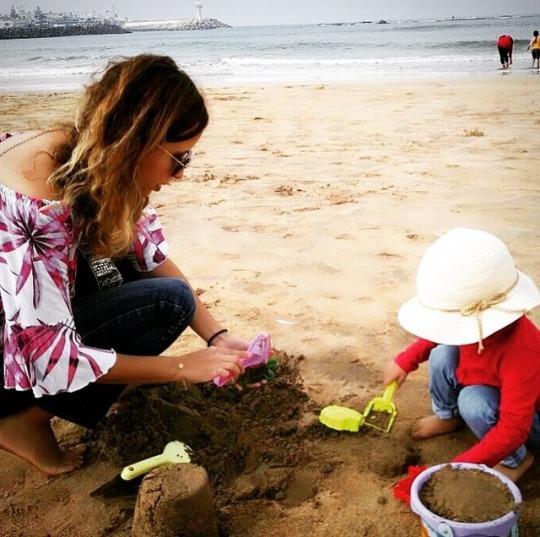
Play is our brain’s favorite way of learning - Diane Ackeman . . . . . . . . #children #childrenlove #play #sea #sealover #travelgram #morocco #rabat #casablanca #harhoura #quote #inspirationalquotes #sundayevening #moroccantraveler #lovelife #inspirationalquotes #childrenphoto #sand #sandgames #games #childrengames #love #moroccanblogger #goodnight #bonnenuit #instadaily #beach #october #fall #waves (at El Harhoura, Rabat-Sale, Morocco)
#childrengames#lovelife#children#quote#bonnenuit#fall#childrenphoto#rabat#beach#harhoura#sand#sea#travelgram#morocco#goodnight#october#games#childrenlove#sundayevening#casablanca#moroccantraveler#love#moroccanblogger#play#sealover#waves#inspirationalquotes#sandgames#instadaily
0 notes
Link
Reading the reactions to the destruction of Lion's Arch in Guild Wars 2 is like a flashback to post-Scars Myst Online. As a player, it's extremely emotional. As a developer, it's giving me really incredibly mean ideas.
Mwahaha, etc.
2 notes
·
View notes
Text
Units of measure
Some of the new (well, new-to-us) Uru concept art in the Obduction-Kickstarter-backer-exclusive Art of Cyan PDF got me thinking about how the D’ni might have measured and proportioned their buildings. It wouldn’t make any sense for D’ni buildings to be laid out in surface-friendly units like feet or meters. For instance, ceiling heights in the US are between 8 and 10 feet, but there’s no reason besides sheer coincidence for a D’ni ceiling to be exactly 8, 9, or 10 feet tall, because they had no idea what a foot even was. That isn’t to say that things like ceiling heights would be wildly different - the D’ni were humanoid, after all, and there’s a certain range of values within which humanoids can live comfortably - just that I’d like to have a native unit to base these measurements on.
Right now, we only have one known unit of D’ni measurement for distances: the span. It’s mentioned in the Book of Ti’ana, and the Great Zero uses it for the distance and elevation measurements in KI-PS coordinates. A span is about 13.3 feet long, which has always struck me as oddly long (and oddly precise) for a fictional basic unit of measurement. Obviously, the D’ni would have needed to have smaller units of measure to work with in day-to-day life, but what are they, and how big are they?
It so happens that if you divide a span into 25 equal pieces, you get a unit of measure that is about 6.4 inches long. I call it the icosipentispan, for lack of a real term. It’s about an inch shorter than the length of the average human male hand (which is 7.4 inches). I can’t see why a hand-length would be any less obvious a unit of measure than a foot (and really, whose foot was ever 12 inches long?). It also turns out that by dividing a span into 25ths, it becomes possible to write distances in decimal (icosipentimal?) notation, making it the D’ni equivalent of an SI unit. (I kind of have an inclination to drive up to Cyan sometime and measure RAWA’s hand now.)
Just like with D’ni time, there’s also a halfway measure that you can arrive at by dividing the span into fifths (the “pentispan”). This yields a unit that’s about 6 inches short of a yard (it’s 2.67 feet / 0.8-ish meters). You can also divide the icosipentispan into fifths to get another halfway unit that’s about 1.28 inches long; otherwise going out to the “hundredths” place in icosipentimal notation takes you down to the 1/4 inch (or 0.65 centimeter) range.
With these smaller units in-hand, it becomes possible to start building humanoid-scale buildings out of native units. Ceilings could perhaps be 3 (7.9 feet) or 4 (10.67 feet) pentispans high, or we could get more granular and work in icosipentispans to hit the sweet spot in-between if desired. Stairs could be 5 icosipentispans (1 pentispan / 6.4 inches) high, and 8 icosipentispans (10.24 inches) deep. (This is a slightly shallower incline than the current 7.5″ x 11.25″ rise/run stairs I’m currently using, but despite using nice round numbers it’s not too far off.)
34 notes
·
View notes
Photo
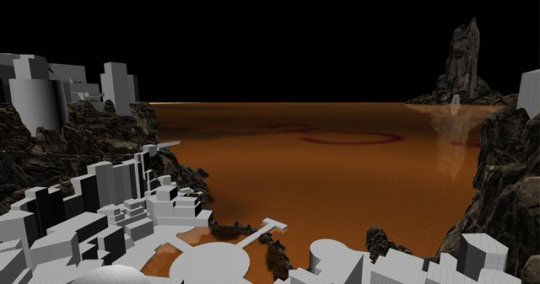
Surprise! I decided to make a rough massing model of the D’ni city (by which I mean the City Proper, not Ae’gura - you can see the latter off in the distance in this shot). There’s a lot of explorable area here (probably a fair bit more than in Uru’s Ae’gura), but it doesn’t feel like it’s too enormous to traverse on foot (and Nexus terminals will eventually help cut travel times even more). It honestly feels pretty incredible to walk around in it, even if it’s just a bunch of gray boxes right now. No joke, I actually got lost at one point, and I’ve spent the last week solid doing pretty much nothing but work on this. Some sign-posts and landmarks are definitely going to be in order.
Here’s a better view of the whole scene, prior to the addition of the rest of the terrain:
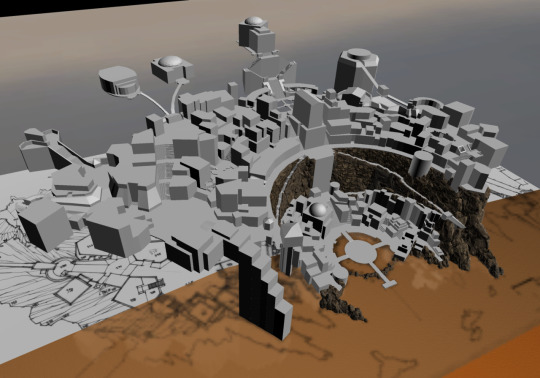
This is the product of about 2.5 weeks of work in Unity. I used ProBuilder to create all of the buildings, walkways, and staircases, and I used rock assets from the Big Environment Pack to kitbash together a rough approximation of the terrain. I still have a few more holes to fill, and I also have to get occlusion culling set up (because boy howdy is kitbashing inefficient), but it was finished enough last night that I decided to go for a stroll, and wanted to share what it looks like from eye level. The view up top is taken from the western upper harbor area, about 240 feet above the water line, and maybe 200 feet west of the line of the Great Zero (which runs straight through the center of the circular boardwalk area below).
The layout of the city is built on this overhead plan originally created by Mark Engberg (yeah, I know). Surprisingly, with the exception of a couple of staircases being way shorter than they needed to be, the plan translates into 3D with basically no modifications needed. The dimensions/layout of the cavern and the position/size of Ae’gura are inferred from information in the novels, Aitrus’s map of the Descent, this map of Ae’gura (which the Unwritten map of Ae’gura is largely based on), the map of the cavern on the floor of the Great Zero in Uru, other old Cyan concept art of the cavern that’s posted on Chiso, and a heaping helping of "that looks about right”. Depending on how Ae’gura itself comes together, it may change size in the future. Also, I know that Ae’gura itself looks a little... weird, but that’s because I just banged out something extremely rough to get a sense of its distance and scale.
There’s a lot more area on the cavern wall that still needs to be mapped out and designed from scratch. I’m not an architect or a city planner, and the terrain in the cavern is wacky enough that even if I were, this would be a pretty unique challenge. I think what I’m ultimately going to have to do is figure out what the lay of the land is like, and then work from there to design the habitable spaces. Figuring out where to put landmarks that have only been established in writing is also complicated by Cyan’s infuriating insistence on using “the city” to mean both “the city on the cavern wall” and “the island of Ae’gura” (this is not just a Wingrovism; Uru does it too).
As far as fleshing out this particular area more completely, I’m at a bit of a loss. There aren’t really a whole lot of examples of D’ni architecture to work from, especially not the really old stuff that would have been built around this original harbor point. I keep finding myself falling down rabbit holes trying to figure out what sort of evolutionary paths D’ni’s architectural design took, how residential structures might have looked (since we’ve never really seen any), which areas of the city reflect certain eras of construction, and how much those areas were renovated or rebuilt at later dates. There are whole fields of discussion to be had about how D’ni culture, religion, and philosophy influenced their architecture at different periods, in everything from proportions to ornament to layout, location, and orientation (@mcmansionhell‘s recent History of Architectural Theory series has been particularly “helpful” in driving me to look at the bigger picture, depending on how you want to define “helpful” ;)). How does an intense devotion to Yahvo, or a desire to please the divine, translate into architectural design? What did the D’ni find aesthetically pleasing, and did that change over time as they transitioned from being a bunch of surface-dwelling Ronay refugees to a civilization that knew of no other home but the cavern? What sort of buildings got an exception to the “only religious buildings go on the Great Zero line” rule, and when? These are all things that I think ought to be explored and defined in order to bring a greater sense of place to the city, but I’m also not sure I have the sort of expertise (or the strongheadedness) to start building my own fanon bible of this stuff on my own. So for now, massing models it is, I guess.
(Fun side story about the layout plan: I forget exactly how I came across it originally, but a couple years ago I found the website for the architecture design firm that Mark Engberg works for now, and they have several pieces of concept art that were done for Uru listed on this page. The thing is, because the site is built on WordPress, their image uploads are all stored in predictable locations that by default don’t have index lockouts. I’ve found REALLY MASSIVE versions of about 20 pieces of Uru concept art in the upload directories - including several that aren’t even shown on the website - because apparently they just uploaded the source files and relied on WordPress’s image resizing features to generate web-friendly versions. One of these pieces is a version of the city plan I linked to above that’s almost 7,000 pixels wide, so the elevations are all perfectly legible. I’ll leave it to intrepid web crawlers to find these assets themselves, because I’m not entirely sure whether Cyan or Colab are actually okay with them being public.)
46 notes
·
View notes
Photo
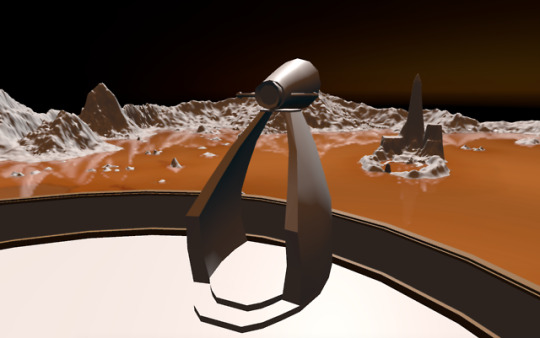

The view I always wanted.
I’ve been working on actually building up a 3D model of the Cavern based on the map I made for Unwritten, and I decided to see what things would look like from Bevin. Of course, my Cavern is twice the size if you go off of KI coordinates alone, so what you see here is actually Bevin at roughly 2,000 spans away, rather than 1,000. The vertical offset and angle from the Zero Line are identical, though. Also, don’t read too closely into Ae’gura’s appearance, it’s just a rough-in at the moment.
(The Bevin scene was imported from Uru via Dark Magicks.)
46 notes
·
View notes
Text
Making Players Vulnerable
One of my big narrative problems with Uru was that it made the players invulnerable, which kills a lot of opportunities for tension. Whether it’s being just a little bit worried about whether that 60-foot drop to the Journey Door in Gahreesen is a good idea or not actively chasing around the bahro linking into the city literally four months after they killed a teenage girl, being vulnerable has the opportunity to keep players on their toes a bit. Besides, it’s not like this invulnerability is a feature of the Myst games – you could still die, you just had to do something that was pretty fundamentally stupid, and those opportunities only largely presented themselves right at the end of the game.
Since Uru and SAND are persistent-world MMOs, it’s not really possible to impose that sort of permanent failure state on the player, but I think there's a way to build a system that requires players to pay more attention to the environment, and which provides the opportunity for heightened narrative tension, even if the negative outcomes are only temporary. Uru's panic-link system will still be in place to prevent players from doing anything that would obviously kill them (like jumping into lava), but what about things that fall short of that criterion? What about smaller (but still serious) falls? What about linking into an arctic blizzard in nothing but your underwear?
To that end, I've designed a system that lets the game impose consequences on players for foolish or reckless behavior. It's sort of an amalgam of the Consequences mechanic from Unwritten (and other FATE RPGs) and pieces of the debuff/condition system in other MMOs like Guild Wars 2. Players have two "impact" bars (for lack of a better term), Conditions and Consequences, which work to indicate how much harm a player has incurred, and provide good visual feedback for their current condition. The system itself is fairly straightforward, but it requires a fair amount of explanation, so follow me after the break for the nitty gritty.
Consequences
I'll start with the Consequences bar, since that basically serves as the player's underlying "health bar". It can be affected by Conditions, but those are not the only way to impact it.
The Consequences bar is divided into three segments. When a player’s character is in perfect condition, the bar is completely empty. If the player does something that will hurt them, that injury is applied to the bar. The greater the harm, the more the bar will fill up. The Consequences bar will also gradually drain, reflecting a character’s recovery from their injuries. So, if a player jumps down a 10-foot drop, they may take some small amount of Consequence impact, but that will gradually bleed off as they continue playing (so long as they don't do anything else that will hurt them). This "draining" process takes longer for each segment, so minor injuries will "heal" fairly quickly, while major impacts will cause even the smaller things to linger much longer.
If the player incurs enough harm to completely fill one of the Consequences bar's segments, it will never drain on its own. For instance, if a player falls off of a 50-foot cliff, they will completely fill the first segment of the Consequences bar, as well as a good portion of the second. Even if they stand stock still forever, they will never "recover" enough to drain the first segment back down to 0. When a segment is full, it will reduce the player's movement speed, and they will be immobilized once all three segments are filled. Any new impacts are also applied on top of any existing Consequence impact, so falling from another 50-foot cliff with the first segment already filled has a greater chance of maxing out the player's Consequences bar entirely.
To empty filled segments of the bar, players need to take corrective action. First-aid kits (which are purchased from merchants in the cavern) can be used to clear the first segment of the bar, as long as the second or third segments are still unfilled. If the second segment is completely filled, a first-aid kit will have no effect. Instead, players must visit a medical tent to get themselves patched up. As long as the third segment remains unfilled, players can choose to defer this action, though their reduced movement speed may quickly make this situation untenable. If the third segment of the bar is filled, players will be automatically incapacitated, and must return to a medical tent immediately for treatment. Linking to a medical tent is a free action built into the new personal linking system (more on that later), but the actual use of the medical tent does cost the player in-game money. Using a medical tent does incur a cost, serving as what I suspect will be a fairly reliable gold sink. If the player does not have any funds in their character's wallet, the medical tent will only clear the second and third Consequences segments.
Conditions
Conditions are situational, environmental effects that, if left unaddressed, will cause harm to your character. If you start to take condition "damage", the Conditions bar will gradually fill up. The rate at which it fills up is determined by the specific type of condition and how long you remain in the inflicting area. Some conditions get increasingly worse over time (stacking intensity), while others just take longer to wear off (stacking duration). If the Conditions bar fills up completely, you will start to take Consequence impact until the Conditions bar has started to drain.
Just like the Consequences bar, the Conditions bar has a built-in drain rate that will cause it to empty at a specific speed. This drain rate applies even while conditions are being applied. As a result, some conditions may be minor enough that you can power through them without taking Consequence impact for a long time. In other cases, conditions will quickly overwhelm the bar's drain rate, causing it to fill up and begin applying Consequence impact.
Stacking
Conditions are applied over time (they're "DoT"s, in MMO parlance), rather than in a single application (like falling damage). Different conditions can apply in different ways, and this has an effect on how quickly the condition starts applying to the Consequences bar, as well as how long it takes for the condition to stop applying.
Conditions that stack in duration will continually add the newly-applied duration of the condition to the total length of the applied condition so far. For example, an Age may apply a 3-second block of Cold with each "tick" (roughly every second). After three seconds, the total remaining duration of the applied Cold condition is 6 seconds (3 seconds applied at tick 1, 3 seconds applied at tick 2, 3 seconds applied at tick 3, but 3 seconds have also elapsed).
In the table below, the horizontal axis indicates a condition's elapsed time, while the vertical axis indicates the time at which it was applied. You can see that at tick 2, a second stack of Cold is applied, but it "stacks" onto the end of the first application from tick 1. This means that damage is applied consistently throughout the duration of the condition, but it can take exponentially greater amounts of time for it to wear off.

Conditions that stack in intensity will apply condition damage from all applied stacks simultaneously. For example, standing in a fire may apply a 5-second Fire condition that fills the Conditions bar at a rate of 1% per second with each tick. After 3 seconds, there are now 3 stacks of Fire which are cumulatively filling the Conditions bar at a rate of 3% per second. Assuming the player exits the fire at 3 seconds, they will incur 2 additional seconds of 3% condition damage, then 1 additional second of 2% condition damage, and finally 1 more second of 1% condition damage.
The table below is laid out just like the one for the Cold condition, but here you can see that instead of being added onto the end of the most recent stack, each new stack is applied on top of the existing ones. This has a multiplicative effect on the amount of damage taken with each new stack, but it quickly wears off once the stacks expire.

While rare, more than one condition can be applied at a time. In these cases, the damage applied to the Condition bar is the sum of the damage generated by all currently-applied conditions.
Mitigating Conditions
By wearing the right gear for the environment you're in, you can easily mitigate most conditions entirely. For example, wearing a parka in an arctic environment will reduce or even eliminate the duration of applied Cold conditions. Wearing a gas mask will allow you to walk across the magma chamber in the Descent without incurring any Noxious Gas conditions (though you may still incur Fire conditions due to the heat, unless you also wear a fire suit).
Condition mitigation is relayed to players through real-world analogues. Rather than requiring players to understand complex abstract statistics tables, clothing is rated for specific situations using real-world measurements. For example, that parka may be rated to eliminate Cold in temperatures as low as -10º. As long as the temperature (which is visible on the KI) remains above -10º, Cold conditions are mitigated entirely. Behind the scenes, there are calculations done to determine the percentage of mitigation that occurs once the temperature does drop below -10º, but players only really need to understand that the colder it gets, the less effective the parka is.
In cases where different items of clothing have different "safety" ratings (like a gas mask with no Fire mitigation worn with a heat suit with Fire mitigation up to 500 degrees), the most effective piece of clothing is always used to perform condition calculations. This prevents players from having to manage a complex inventory of equipment and calculate what the final effectiveness of wearing a parka and shorts is, versus wearing a parka and snow pants.
Consequences Impact
As noted above, conditions will begin to affect the Consequences bar once the Conditions bar is completely filled. This serves as a sort of buffer, enabling players to notice that they're experiencing an issue and work to address it before they start taking direct harm. Different conditions will fill the Condition bar at different rates, depending on their intensity (Fire fills the bar much faster than Cold, for instance). It also has a persistent effect, though, continuing to apply Consequence impact even after the player has left the dangerous area. It is therefore in the player's best interests to get out of dangerous situations before the conditions are severe enough to start impacting the Consequences bar.
Once the Conditions bar is full, a specific formula for each condition determines how strongly they impact the Consequences bar. To return to our previous example, Fire will apply Consequence impact much faster than Cold, and that impact will increase with each active stack. All stacks of a condition will always apply at the same rate, so the severity of a condition is determined solely by the number of applied stacks and the type of stacking it performs. There is no "worse" version of Fire that gets applied by stepping in lava, it just applies more stacks at once. Similarly, there is no “worse” version of Cold, it just applies more frequently and for longer durations the colder it gets.
Consequence impact will stop as soon as the Conditions bar drops below 100%. This can occur because all conditions have expired, or because the Conditions bar is draining faster than any remaining conditions can keep it filled.
17 notes
·
View notes